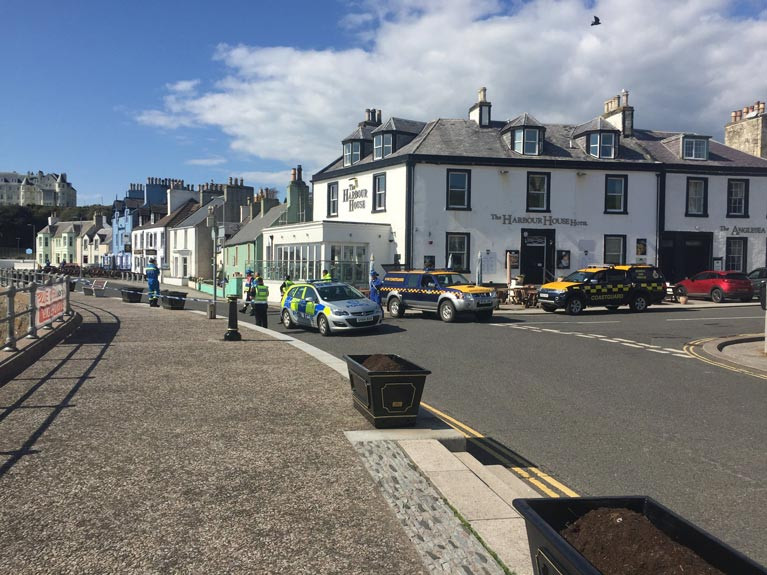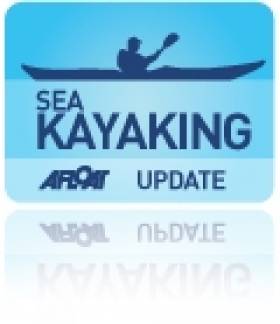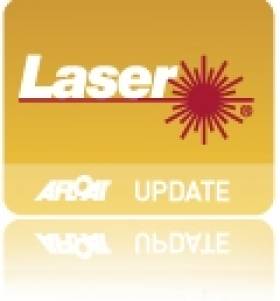Displaying items by tag: Portpatrick
Royal Navy Carry Out Controlled Explosion on WW II Bomb Caught in Fishing Net at Portpatrick
Many sailors from this side of the North Channel count Portpatrick as a favourite destination, either for cruising or racing purposes but that pretty tourist village and harbour were sealed off by police and Coastguard yesterday after a scallop dredger an unexploded shell or bomb aboard, berthed in the village, the Stranraer and Wigtownshire Free Press reports.
A Royal Navy spokeswoman said the device was moved to a safe location and a controlled explosion was carried out.
Thousands of tonnes of World War Two munitions were dumped out to sea, in the Beaufort's Dyke, between south-west Scotland and the Northern Irish coast, and some have washed up over the years on the coast of Galloway and on the Antrim coast.
Beaufort’s Dyke is a deep underwater trench between south-west Scotland and Northern Ireland and it was thought to be a safe, final resting place for the munitions. However, it is suspected that some may have been ditched closer to shore.
Top NI Surf Kayaker Set To Cross Irish Sea
#SeaKayaking - A Portrush teen is preparing to cross the Irish Sea by kayak for charity this summer.
Top surf kayaker Andy McClelland aims to raise funds for the Alzheimer's Society, Kidney Research and the Regional Respiratory Centre with his One Man One Boat campaign, which will see him kayak 22 miles across the open water from Donaghadee in Co Down to Portpatrick in Scotland.
The current Surf Kayak Junior World Champion will embark on his challenge in a high-performance sea kayak on loan from Rockpool Sea Kayaks and is presently planning his trip with fellow physiotherapy students at Ulster University Jordanstown as well as the Causeway Coast Kayaking Club.
McClelland has yet to set a date for the solo crossing, awaiting word on the best possible weather and sea conditions in May.
The Alzheimer's Society has more on the story HERE.
UK Laser Sailors in £50K Irish Sea Crossing Challenge
#LASER - A pair of British sailors are set to embark on an intrepid crossing of the Irish Sea using just two single-handed Laser dingies.
David Summerville and Steve Cockerill had originally planned to make the crossing in September last year, but those plans were scuppered by 50-knot gale force winds and a 12-foot tidal swell, according to Incentive Travel.
But the duo is now planning to try again, with the backing of the Ramada Plaza Southport.
“David and Steve will be covering 115 nautical miles during the challenge," said Ramada Plaza general manager Enda Rylands. "They will set off from my own home town of Dublin and finish in Southport, aiming to raise £50,000 for mental health charity Mind and the John Merricks Sailing Trust."
Summerville, a 53-year-old grandfather of two who runs a boat repair business, said the date of the challenge would again depend on weather and tidal conditions, and that the pair is ready to depart any time from mid-April to mid-September.
It's not the first time that an Irish Sea crossing has been done in a Laser as Tiffany Brien achieved the feat in 2010, sailing single-handedly the 30 miles from Portpatrick in Scotland to Belfast Lough.
But Summerville and Cockerill's ambitious undertaking, at more than three times that distance, would surely get them a place in the record books - provided the weather goes their way!































































